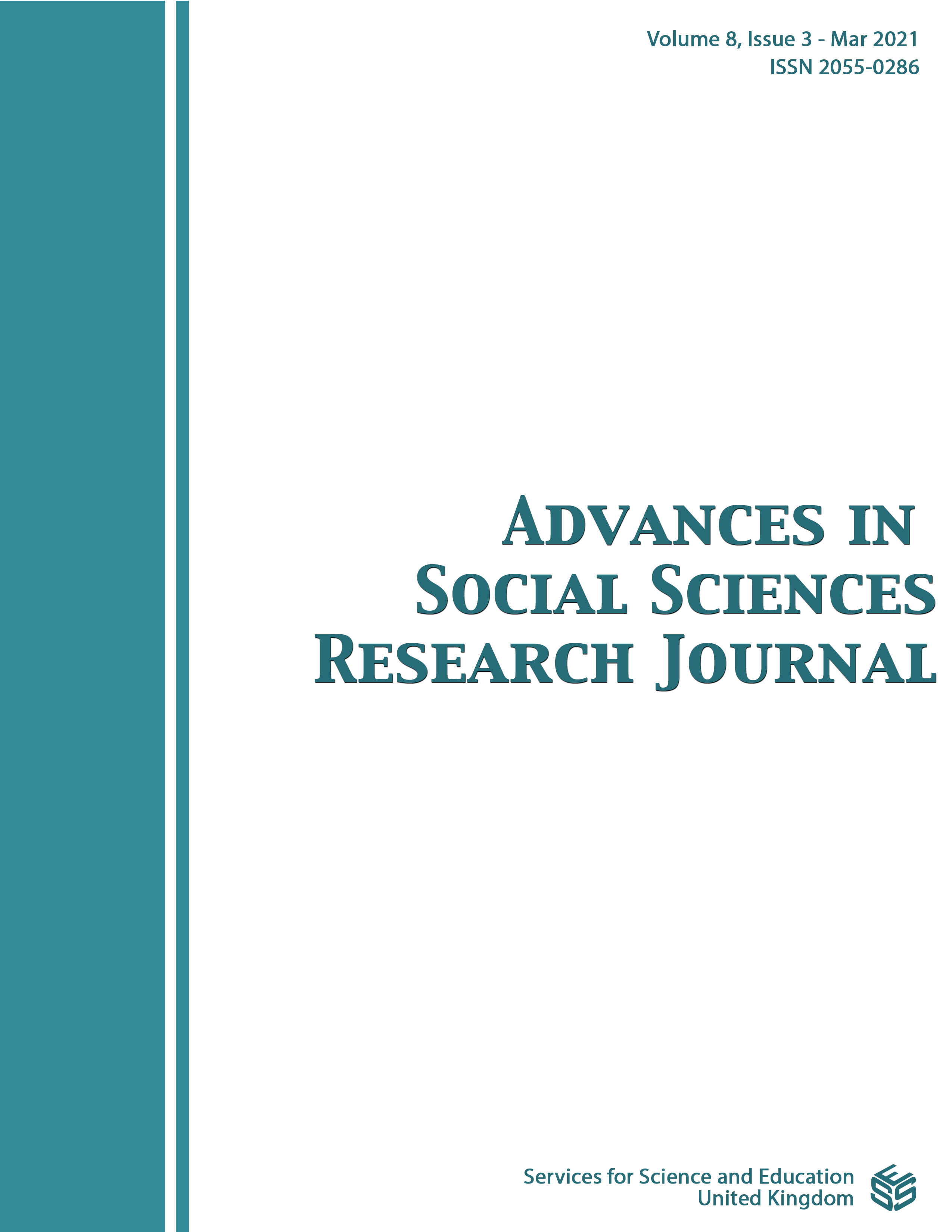Distributional Effects of Public Educational Expenditures: Empirical Results from Cohort Analysis
DOI:
https://doi.org/10.14738/assrj.83.9928Keywords:
public expenditure, education inequality, years of schooling, Gini coefficientAbstract
This article scanned the empirical analysis of the distributional effects of public education expenditure using Gini coefficient of education based on cross-sectional data across cohorts in Bangladesh. The main purpose of this study was to investigate whether education expenditure plays a role as a catalyst to diminish education inequality across the country by increasing years of schooling across levels of education. The Data set proved that overall years of schooling increased while education expenditure increases for a long time having slight fluctuations. Consequently, the Gini coefficient of education gradually increased and the inequality of education getting narrowed down across levels of education. Distributional effects of public expenditure on education across cohorts produced an exceptionally good result indicating positive relationships between years of schooling and the Gini coefficient of education. Despite the achievements of the education sector, the government of Bangladesh has comprehended that in the public sector education, there are substantial numbers of challenges make it tough to get the best outcomes along with quality education and insufficient budget flow across levels of education. This paper tended to uncover education redistributive policy and the existence of inequality in the cohorts across levels of education by estimating the Gini coefficient of education in Bangladesh.
References
Banzragch, O., Mizunoya, S., & Bayarjargal, M. (2019). Education inequality in Mongolia: Measurement and causes. International Journal of Educational Development, 68(May), 68–79. https://doi.org/10.1016/j.ijedudev.2019.04.010
Benabou, R. (1996). Inequality and Growth. NBER Macroeconomics Annual, 11, 11–74.
Bennett, D. L. (2012). Educational Inequailty in the United States: Methodology and Historical Estimates of Education Gini Coefficients. SSRN Electronic Journal, (August). https://doi.org/10.2139/ssrn.2134646
Burt, M. E., & Namgi, P. (2008). Education Inequality in the Republic of Korea: Measurement and Causes. In D. B. Holsinger & W. J. Jacob (Eds.), Inequality in Education: Comparative and International Perspectives (p. 608). Springer.
Castelló, A., & Doménech, R. (2002). Human Capital Inequality and Economic Growth: Some New Evidence. The Economic Journal, 112(478), C187–C200. Retrieved from http://www.jstor.org/stable/798367
Checchi, D. (2001). Education, inequality and income inequality. In LSE STICERD Research Paper. https://doi.org/10.1111/1468-0351.00017
Dadon-Golan, Z., BenDavid-Hadar, I., & Klein, J. (2019). Revisiting educational (in)equity: Measuring educational Gini coefficients for Israeli high schools during the years 2001–2011. International Journal of Educational Development, 70(July), 102091. https://doi.org/10.1016/j.ijedudev.2019.102091
Deaton Angus S. (1997). The Analysis of Household Surveys: A Microeconometric Approach to Development Policy. Baltimore and London: Johns Hopkins University Press.
Devkota, S. C., & Upadhyay, M. P. (2016). How does education inequality respond to policy? A method and application to survey data from Albania and Nepal. Journal of Economic Studies, 43(2).
Dutta, S. (2017). Educational inequality in India: Evedince from 71st NSSO Round. Journal of Educational Planning and Administration, XXXI(1), 289–306.
Galor, O., & Moav, O. (2004). From physical to human capital accumulation: Inequality and the process of development. Review of Economic Studies, 71(4), 1001–1026. https://doi.org/10.1111/0034-6527.00312
Gruber, L., & Kosack, S. (2014). The tertiary tilt: Education and inequality in the developing world. World Development, 54, 253–272. https://doi.org/10.1016/j.worlddev.2013.08.002
Halter, D., Oechslin, M., & Zweimüller, J. (2014). Inequality and growth: The neglected time dimension. Journal of Economic Growth, 19(1), 81–104. https://doi.org/10.1007/s10887-013-9099-8
Joseph, Z., & Oded, G. (2013). Income Distrinution and Macroeconomics (No. 2013–12). Department of Economics, Brown University.
Kaldor, N. (1955). Alternative Theories of Distribution. The Review of Economic Studies, 23(2), 83. https://doi.org/10.2307/2296292
Kuznet, S. (1955). Economic Growth and Income inequality. The American Economic Review, 1(45), 1–28.
Perotti, R. (1993). Political Equilibrium, Income Distribution, and Growth. The Review of Economic Studies, 60(4), 755–776. https://doi.org/10.2307/2298098
Planning Commission. (1995). The Fourth Five Year Plan. Planning Commission, Government of the People’s Republic of Bangladesh, Dhaka.
Prasartpornsirichoke, J., & Takahashi, Y. (2013). Assessing Inequalities in Thai Education. IDEC DP2 Series. Retrieved from https://ideas.repec.org/p/hir/idecdp/3-2.html
Qian, X., & Smyth, R. (2008). Measuring regional inequality of education in China: Widening coast-inland gap or widening rural-urban gap? Journal of International Development, 20(2), 132–144. https://doi.org/10.1002/jid.1396
Senadza, B. (2012). Education inequality in Ghana: Gender and spatial dimensions. Journal of Economic Studies, 39(6), 724–739. https://doi.org/10.1108/01443581211274647
Tan, S. C., Ho, C. M., & Pang, V. (2016). Why has education inequality widened in Sabah, Malaysia? Economics Bulletin, 36(1), 569–575.
Thomas, V., Wang, Y., & Fan, X. (2001). Measuring Education inequality: Gini Coefficients of Education. In Economic Studies in Inequality, Social Exclusion and Well-Being (No. 2525). https://doi.org/10.1007/978-81-322-2166-1_1
Trabelsi, S. (2013). Regional Inequality of Education in Tunisia: an Evaluation By the Gini Index. Region et Developpement, 37, 95–117.
Uddin, M. N., & Sarntisart, S. (2019). Human capital inequality and economic growth: evidence with sub-national data from Thailand. International Journal of Social Economics, 46(7), 938–956. https://doi.org/10.1108/IJSE-07-2018-0368
Umar, H. M. (2017). The Microeconomic Determinants of Educational Inequality in Nigeria. Proceedings of the Global Conference on Business and Economics Research (GCBER), Serdang, 14-15 Aug 2017, (2004), 345–350. Retrieved from http://www.econ.upm.edu.my/research/global_conference_on_business_and_economics_research_2017/gcber_2017_proceedings-32931
Wen, J. (2019). An Inspection on the Educational Gini Coefficient for the Balanced Development of China’s Compulsory Education. 4th International Conference on Contemporary Education, Social Sciences and Humanities (ICCESSH 2019), 329(Iccessh), 409–415. https://doi.org/10.2991/iccessh-19.2019.94
Yang, J., Huang, X., & Liu, X. (2014). An analysis of education inequality in China. International Journal of Educational Development, 37, 2–10. https://doi.org/10.1016/j.ijedudev.2014.03.002
Ziesemer, T. (2016). Gini coefficients of education for 146 countries, 1950-2010. United Nations University-Maastricht Economic and Social Research Institute on Innovation and Technology (MERIT), 3(2), 1–8.
Downloads
Published
How to Cite
Issue
Section
License
Authors wishing to include figures, tables, or text passages that have already been published elsewhere are required to obtain permission from the copyright owner(s) for both the print and online format and to include evidence that such permission has been granted when submitting their papers. Any material received without such evidence will be assumed to originate from the authors.






